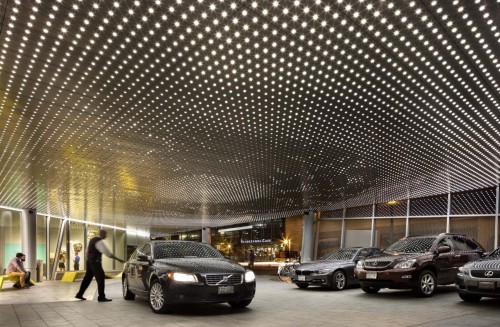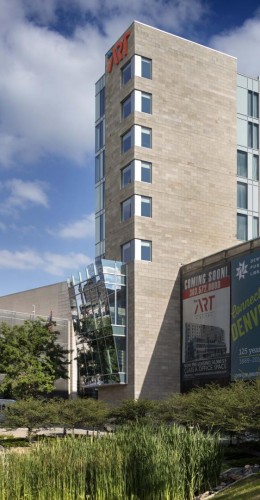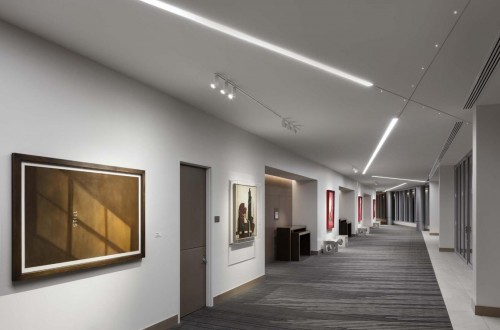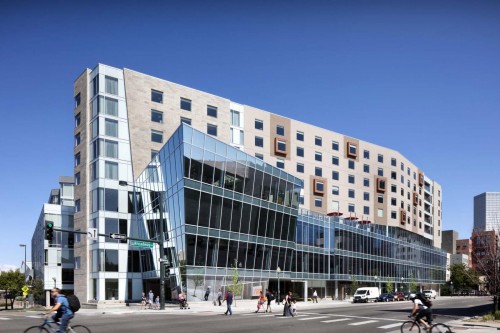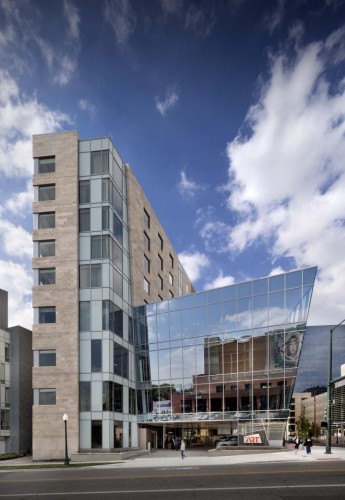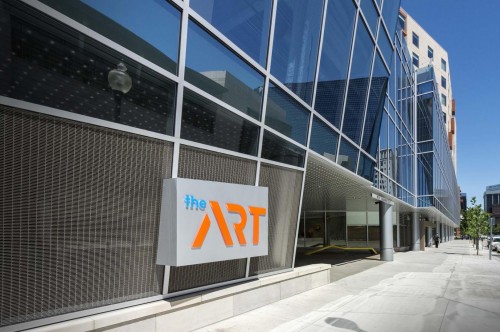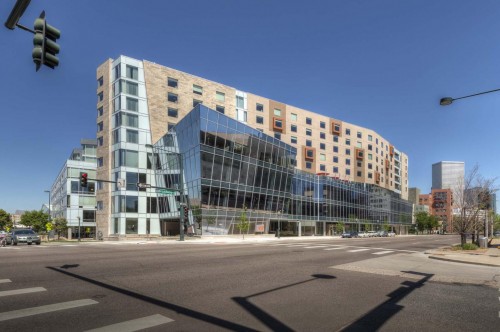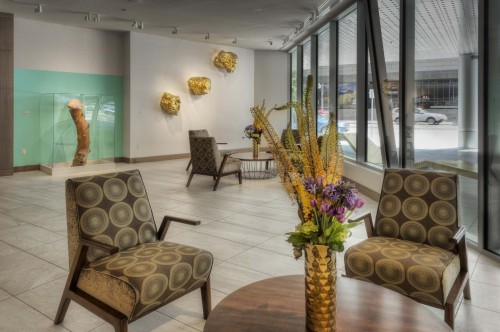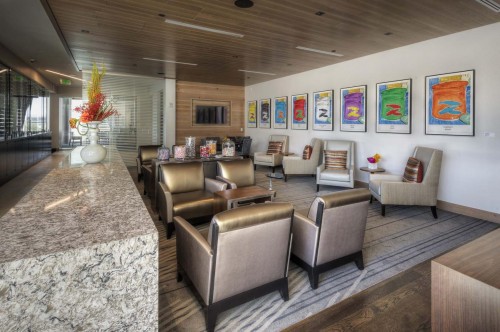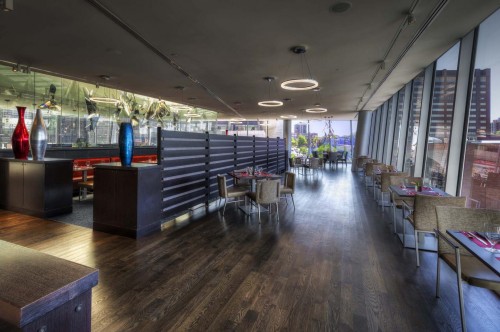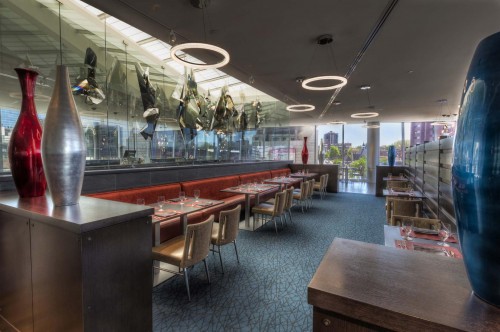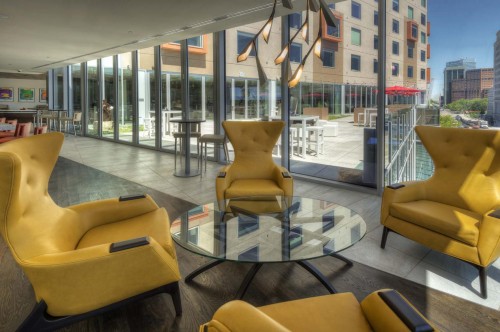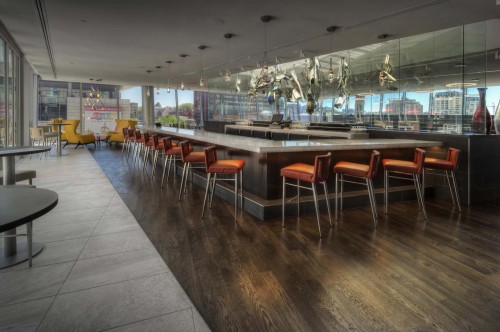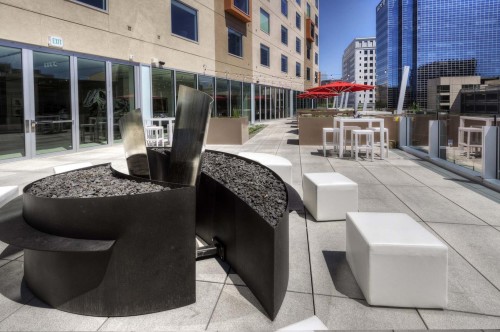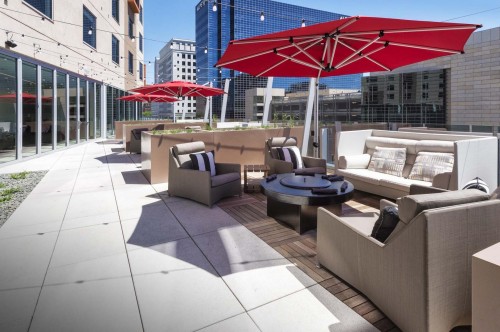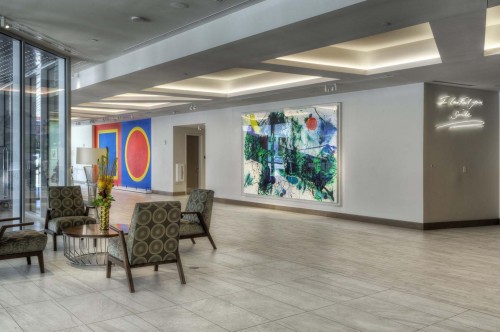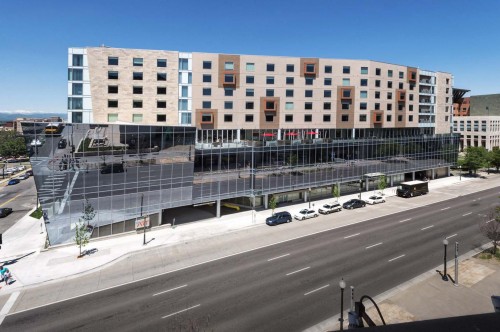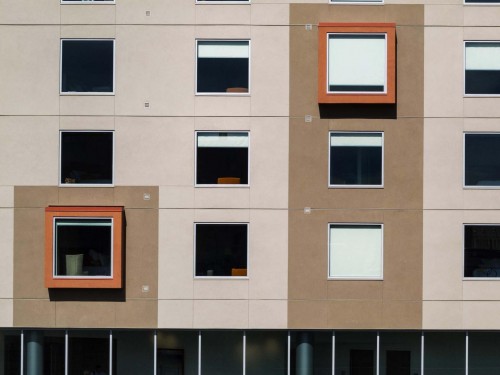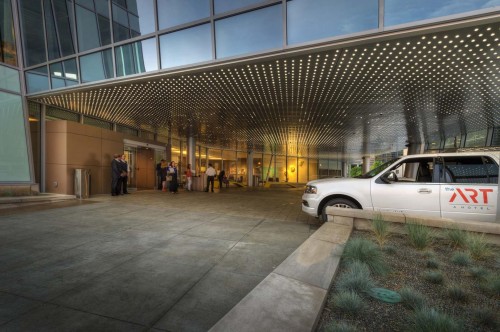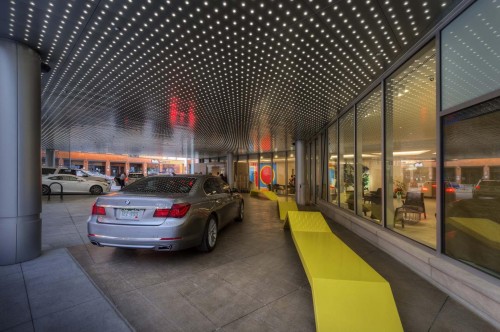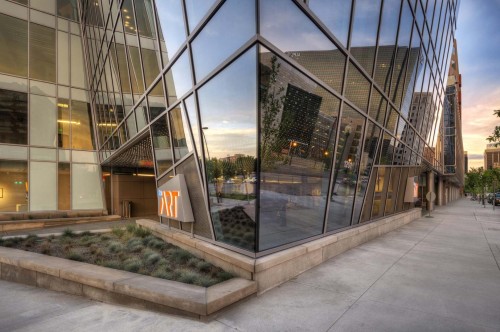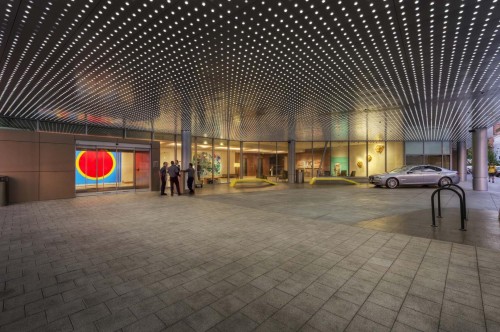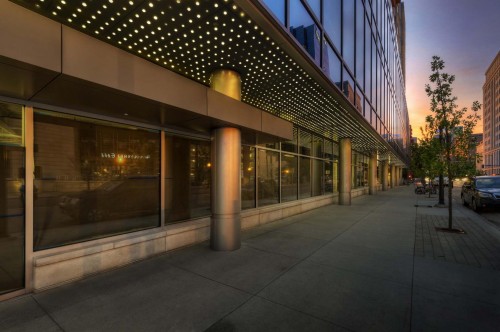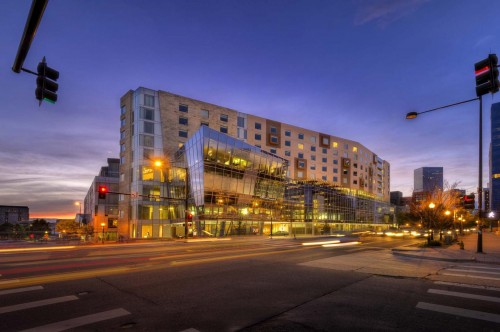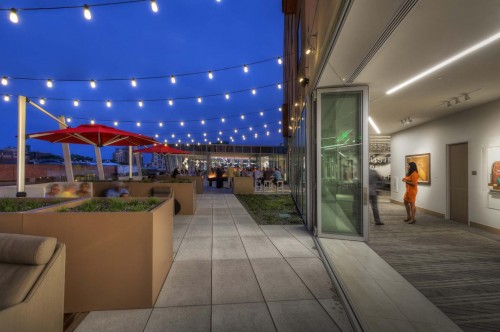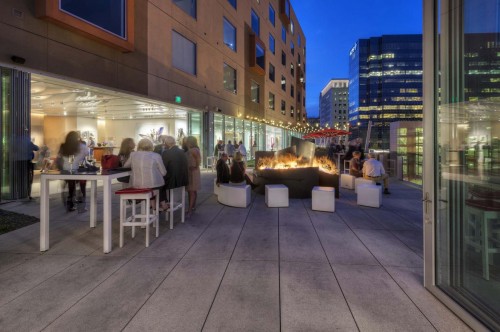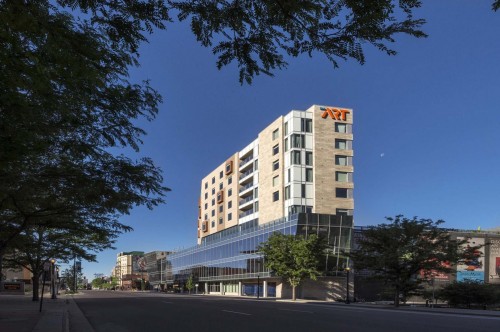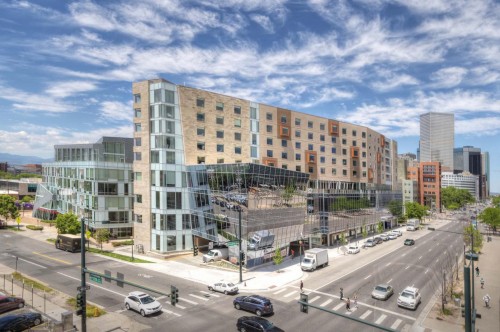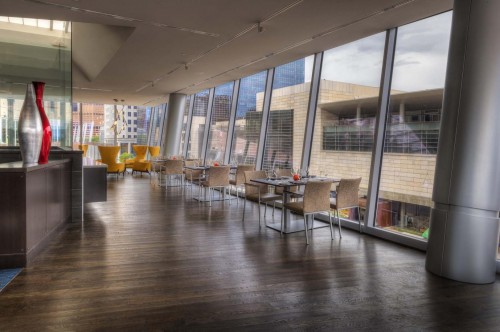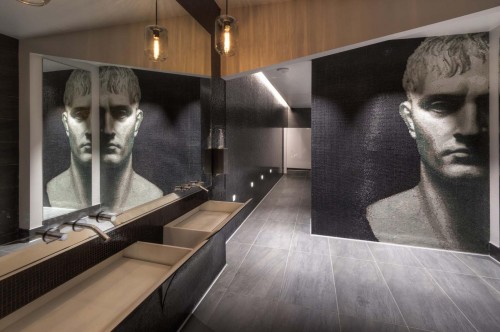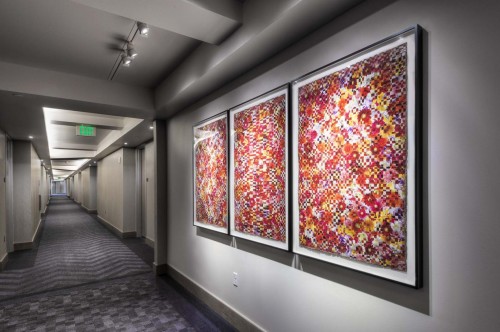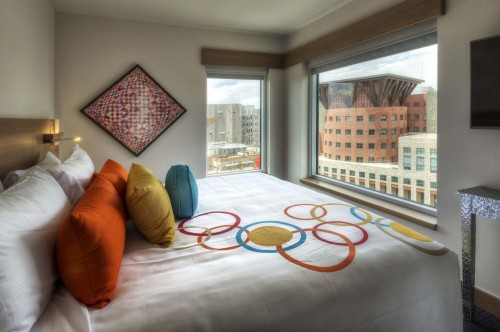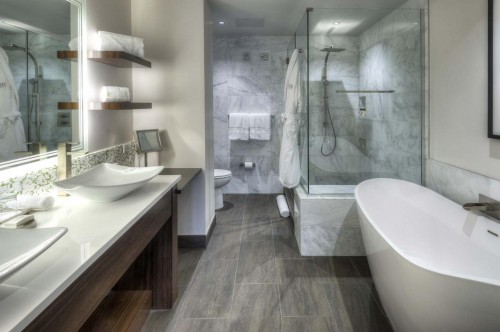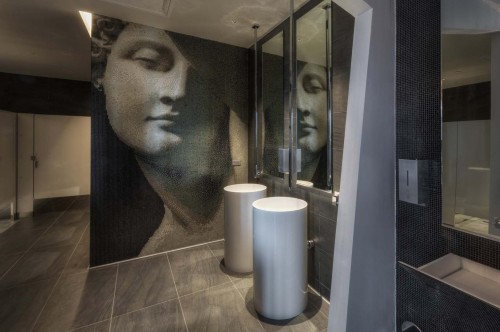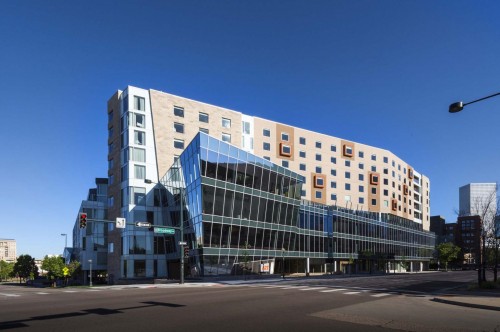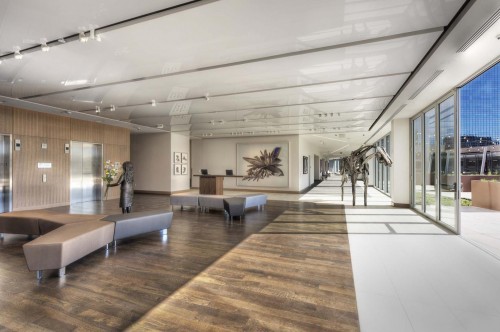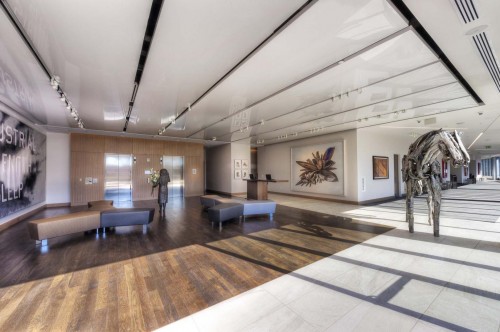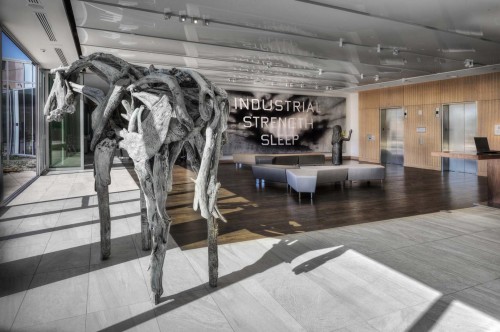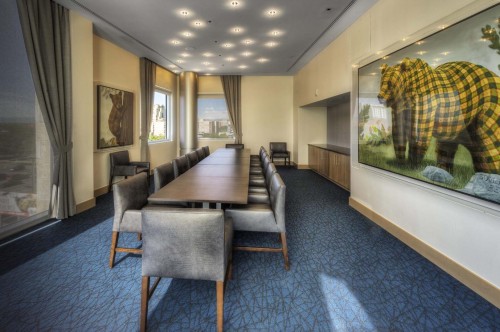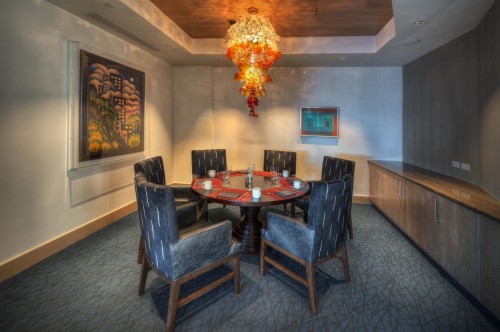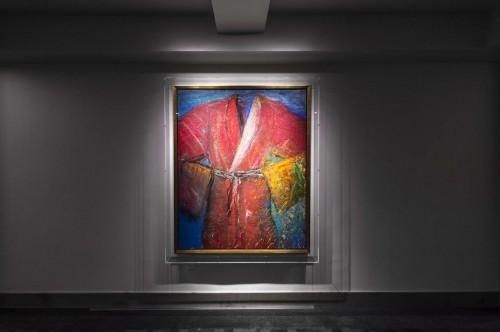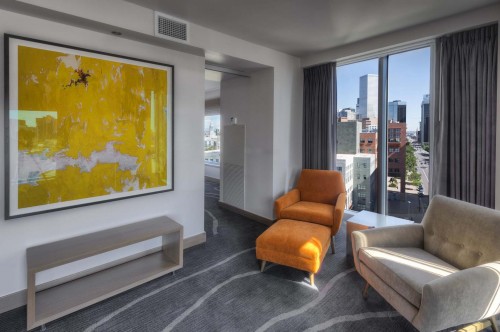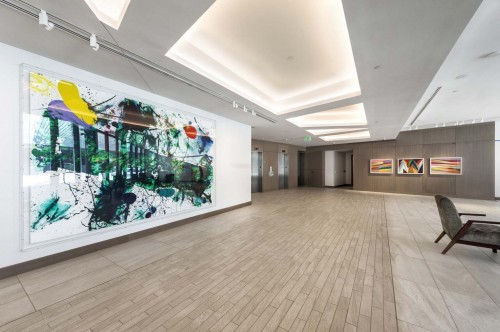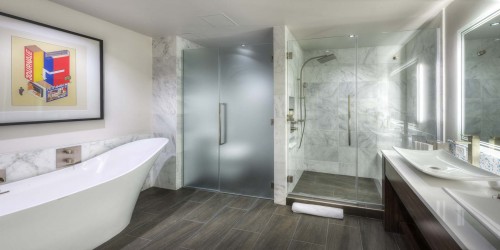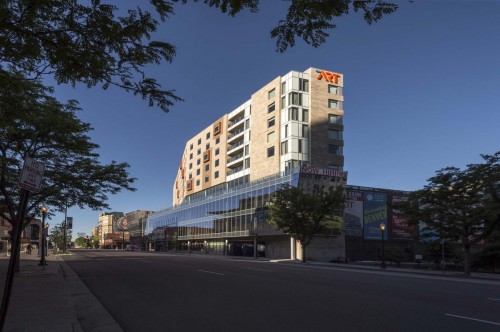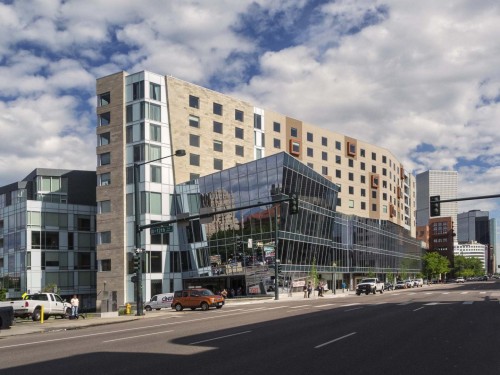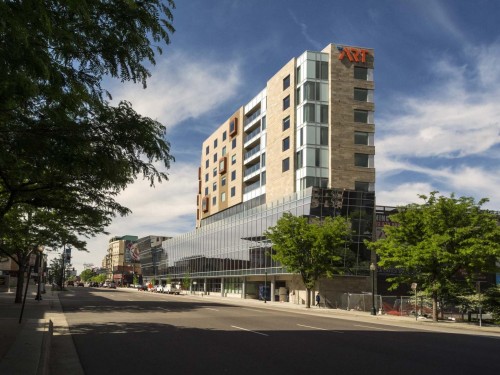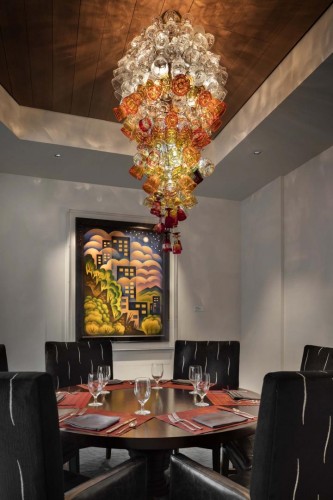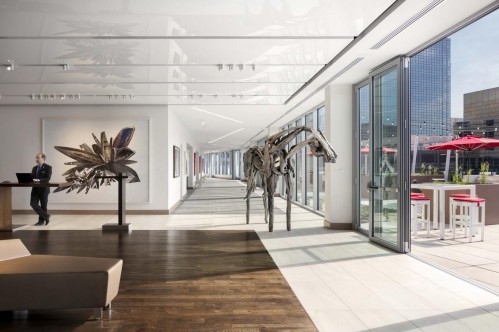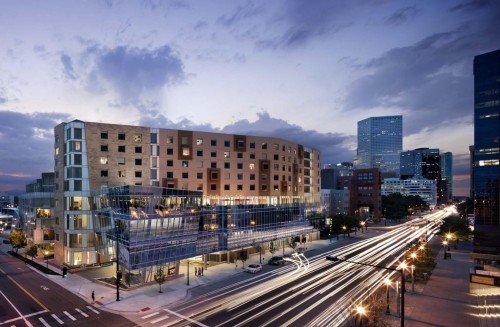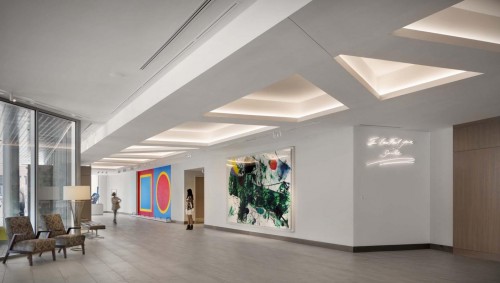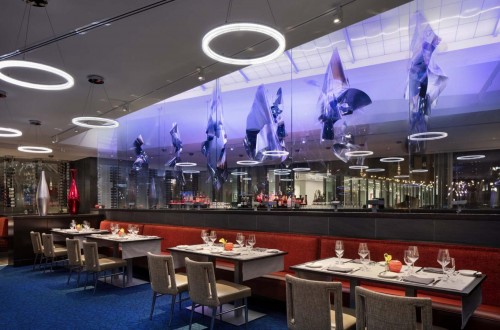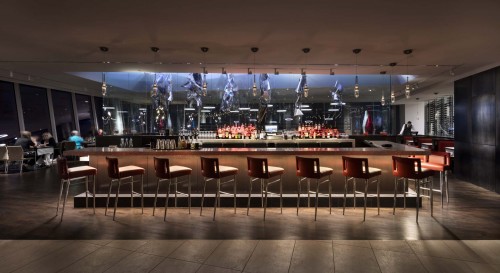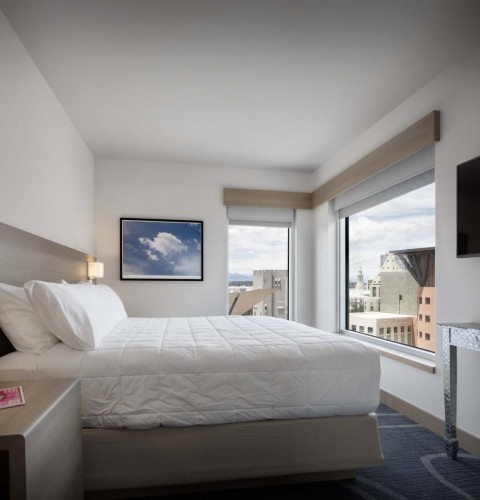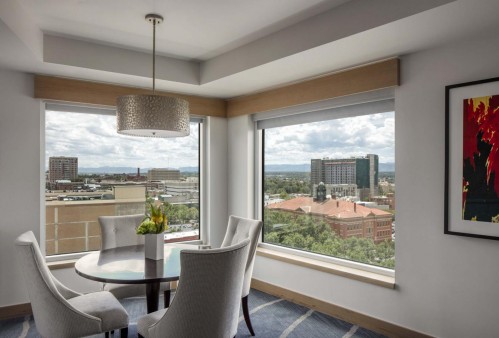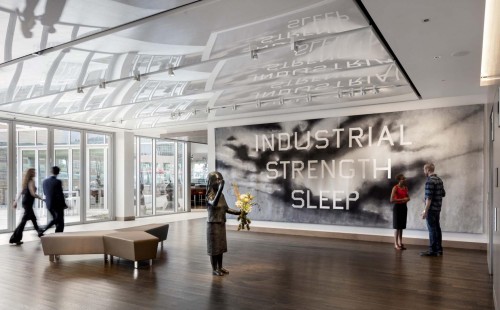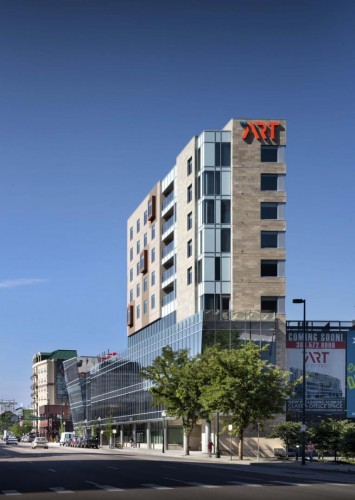
ENGINEER OF RECORD
Martino & Luth Structural Engineers
CONTRACTOR
Haselden Construction
ARCHITECT
Davis Partnership Architects
The Art Hotel
COMMERCIAL | July 2013
Denver, Colorado
The North-West corner of 12th and Broadway in Denver Colorado is one of the most important corners in the city. Across the street on the East side of Broadway is the History Colorado Center. One block North is the Denver library and the Ralph L. Carr Colorado Judicial Center. However, this corner has been used for a parking lot in recent memory and has detracted from the overall aesthetics of the location. In the past ten years, many developments have been proposed for the site but were not found to be economical due to the site’s awkward shape and the relative remoteness from downtown. Enter Corporex with an idea for a boutique hotel over an office building. If it was going to work, the design team needed to solve several cost and logistics problems
The ART is a small hotel which offers a unique experience by focusing on both the design as well as the amenities. By focusing on future technology, artistic aesthetics, and personal attention the ART offers what no other hotel can. The hotel has works of art throughout, galleries, restaurants, meeting rooms, and every convenience you could imagine.
Structurally, the project is unique because it has four stories of light gauge steel bearing wall framing over five stories of composite structural steel framing. This was required because the first four stories are being used for office space and hotel amenities and the upper floors are for hotel rooms. The walls between hotel rooms are light gauge steel bearing walls and they get transferred out at the fifth level to accommodate the open spaces required for offices and hotel amenities.
In addition, to satisfy compatibility and constructability issues between the composite steel framing below and the light gauge steel framing above, the stiffness issue common to light gauge buildings utilizing strapped wall lateral systems had to be solved. Typical straps are installed after all the dead load has been applied to the building otherwise they become loose and ineffective as the walls compress. This means drywall on the lower levels must wait until the floor slabs are installed on the upper levels. M&L solved this problem by inventing a system to pretension the strapped wall system as it was built. Not only did this stiffen up the light gauge system, it decreased the construction schedule as the drywall on the walls below could begin prior to completing all the floors above.

